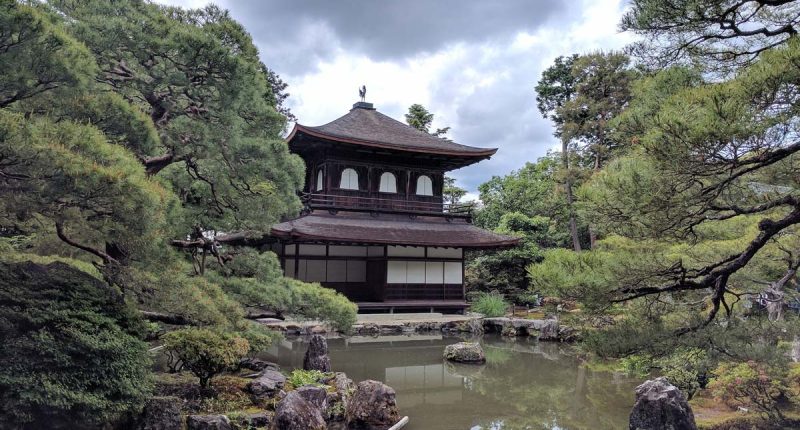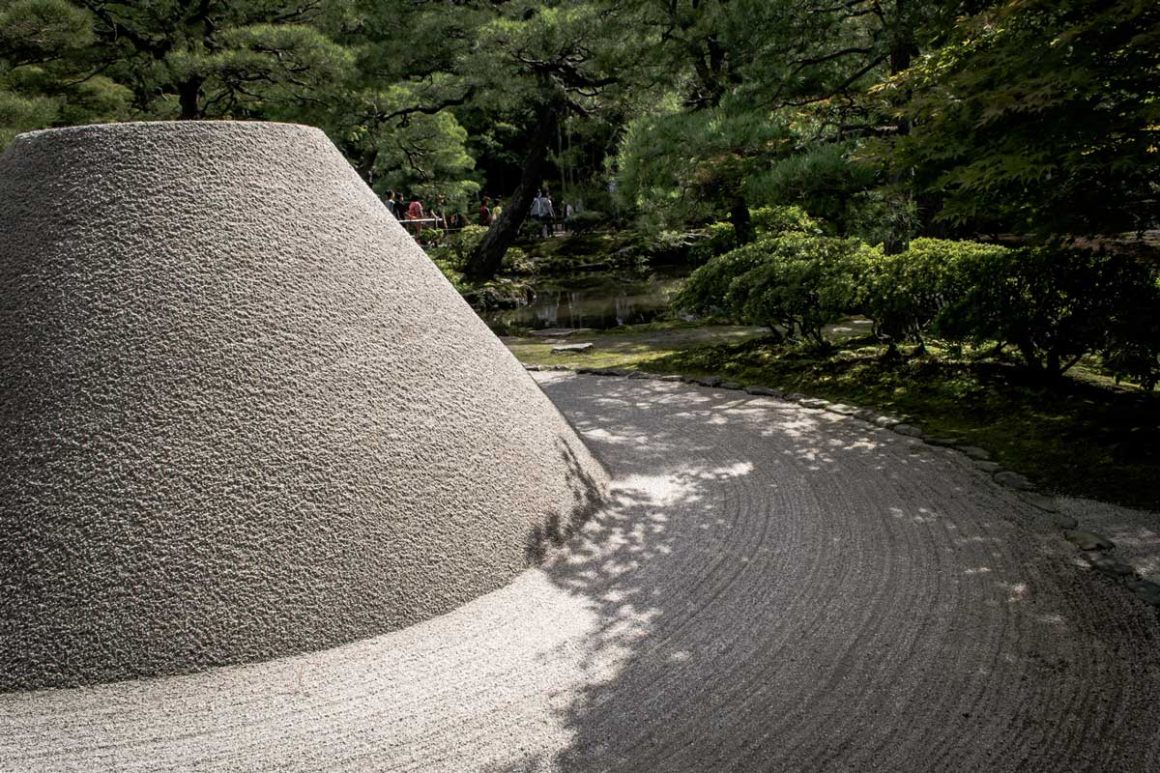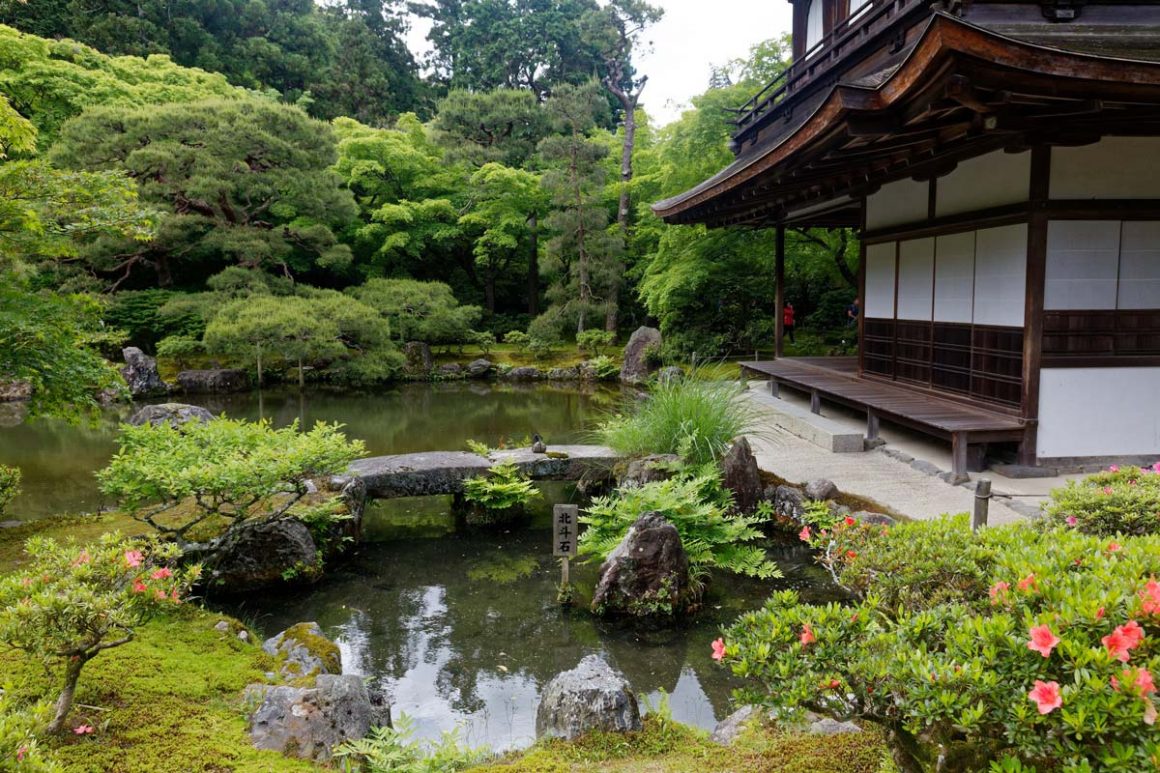Ginkakuji (銀閣寺, “Temple of the Silver Pavilion”) is a Zen temple in the Higashiyama Ward of Kyoto. The pavilion is not in fact covered in silver—the name is believed to have come about because initial plan involved covering the pavilion in silver leaf, similar to Kinkakuji. Instead it remains “unfinished” and has become to represent the Japanese notion of wabi-sabi (侘寂)—the idea that something incomplete and plain can also have aesthetic qualities. The temple underwent extensive restoration between 2008 and 2010 before re-opening to the public.
The pavilion was constructed in the late 15th century by Ashikaga Yoshimasa, the grandson of Ashikaga Yoshimitsu, who built Kinakuji, on which the plans for Ginkakuji were based. The temple grounds include the pavilion, several other temples, a wooded garden, as well as dry stone garden which includes a sand mound feature called the “Moon Viewing Platform”.







